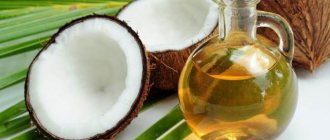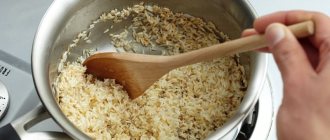What is fiber?
Fiber is a type of carbohydrate, but, unlike other substances in the group, it cannot be broken down into digestible glucose molecules.
Thus, the fiber passes through the entire digestive tract practically unchanged. However, fiber does a lot of work along the way. This substance is of great importance for proper digestion and weight correction, regulation of sugar and cholesterol levels in the blood. There is also an opinion that fiber is one of the factors that prevents the development of cancer. Some talk about it as a substance that prolongs the youth of the body.
Content:
- What is fiber?
- Daily norms
- Soluble fiber vs. insoluble fiber
- Benefits for humans
- Fiber and...
- Fiber in supplement form
- Diet rich in fiber
- Fiber-rich menu options
- When to cut back on fiber
- Excessive fiber consumption: benefits and harms
- How to take fiber correctly
Types, characteristics, composition of fiber
It is not entirely correct to understand fiber as a specific chemical compound; it is simply a generalized name for the food components that make up a certain group. In another way it can be called dietary fiber. Despite the fact that their properties are largely similar, serious differences can also be observed.
When switching to a nutrition system that is based on the consumption of foods rich in fiber, you need to remember that:
- Gum is found in oatmeal.
- Bran, cabbage, wheat flour, green beans, young peas, apples, carrots, broccoli, sweet peppers, and cucumber peel are rich in polysaccharides (cellulose).
- Cereals and bran are rich in hemicellulose. This should be remembered, because... similar food products, for example, wheat fiber, actively absorb water.
- A lot of pectin is found in citrus fruits, carrots, apples, strawberries, potatoes, and cauliflower. A distinctive property of this substance is its ability to reduce fat absorption.
- Woody parts of plant cells (lignin) are found in strawberries, cereals, radishes, bran and peas. They reduce the level of bad cholesterol in the blood and prevent the absorption of other fibers.
Fiber, regardless of its origin or type, can be described as a nutrient rich in carbohydrates but low in sugar. Because of this, it cannot be used as a raw material for energy production, but is still necessary for many important processes.
There are two types of fiber that differ in their physical properties:
- Soluble. These include hemicellulose, pectin and food resins. The body spends a lot of time digesting it, which is why the feeling of fullness does not go away for a long time. Against this background, the process of absorption of sugar from the blood slows down, and the level of bad cholesterol decreases.
- Insoluble. This group includes lignin and cellulose. These substances pass through the intestines much faster. At the same time, they also absorb excess liquid, ensuring cleansing of the digestive tract. This is the type of fiber that people suffering from constipation need.
According to nutritionists and doctors, the daily fiber intake should not exceed 40 g. However, the fact of what type of product is used sometimes plays an important role. Therefore, before switching to a specific nutritional method, you should visit a specialist and discuss with him all the main and controversial issues. Only in this case will the benefits of fiber for the body appear very soon and in full.
Daily norms
Researchers say the average woman consumes about 13 grams of fiber daily, and men about 17 grams. Meanwhile, nutritionists have found that fiber is so important for humans that it should be present in the diet every day. At the same time, men under 50 years old should consume approximately 38 grams of fiber per day, older ones - about 30 grams. Women under 50 years of age are recommended to consume about 25 g of the substance daily, and 21 g per day is enough for women over 50. It is not difficult to provide yourself with these portions if your daily diet contains whole fruits and vegetables, nuts and seeds.
The required amount of fiber for children is determined taking into account age categories: children under 3 years old should receive 19 g of the substance per day, 4-8 years old - about 25 g per day, girls 9-18 years old - 26 g each, boys 9-13 years old – 31 g each, boys 14-18 years old – 38 g each.
Nutritionists say that the ratio of insoluble to soluble fiber should be 75% to 25%. But since many products (rolled oats, bran, flax seeds and others) contain two types of dietary fiber, you should not specifically calculate the proportions.
How to take fiber correctly
There is another, pharmaceutical variety of dietary fiber, which is sold in dry form. It is suitable for those who, due to constant employment, cannot maintain their usual diet.
To properly take fiber in this form, you need to follow these rules:
- We start with ½ spoon per day and gradually increase the dosage. To avoid unwanted consequences, the permissible amount is 2 tbsp. l. It is recommended to divide it into several doses.
- The right time is 30 minutes before meals, adding dry powder to some liquid: juice, fermented baked milk or yogurt.
- In between doses, it is recommended to drink as much water as possible.
It is important to understand that fiber is not a panacea for all gastrointestinal diseases. This product, of course, has a beneficial effect on the body, but cannot in any way heal it from existing pathologies. That is why before you start taking plant fibers, you should definitely consult with a specialist. After all, there are diseases for which fiber is strictly contraindicated: enterocolitis, stomach ulcers, infectious etiologies, chronic gastritis of unknown origin.
To improve your overall health, in addition to enriching your diet with fruits and vegetables, start moving more, drink more water and give up bad habits. And the result will not take long to arrive, believe me!
Soluble fiber vs. insoluble fiber
Dietary fiber consists of non-starch polysaccharides such as cellulose, dextrins, inulin, lignin, chitin, pectins, beta-glucans, waxes and oligosaccharides.
There are two main types of fiber: soluble and insoluble.
Soluble fiber
Soluble fiber, as the name implies, dissolves in an aqueous environment, and when passing through the digestive tract, it can be fermented, after which it acquires a jelly-like consistency. It slows down the digestion process, resulting in a feeling of fullness that lasts longer. Thanks to this ability, it helps control appetite, and therefore weight.
Benefits of Soluble Fiber:
- reduces the level of “bad” cholesterol;
- regulates blood sugar concentration, which is important for diabetics and people with metabolic syndrome.
Products containing soluble fiber: fruit pulp, beans, peas, carrots, oats, flaxseeds. All these products dissolve in the body to a gel-like texture.
Insoluble fiber
Benefits of Insoluble Fiber:
- promotes proper intestinal motility and prevents constipation;
- accelerates the removal of toxins from the body through the colon;
- maintains optimal acidity levels in the intestines.
Insoluble fiber retains its shape throughout all stages of digestion. Accelerates the passage of food through the gastrointestinal tract and its elimination, which prevents constipation. Examples of insoluble fiber are hemicellulose, cellulose and lignin.
Foods rich in insoluble fiber: vegetables and fruits (peels), beans, greens, nuts, seeds.
Many foods contain both soluble and insoluble fiber. But their proportions vary. Meanwhile, substances from both categories have a beneficial effect on the functioning of the body.
Why is there so little fiber in rice porridge?
The grains of rice that are sold to us are significantly different from those collected in the fields. They undergo processing before entering the store. First, they are “stripped” from the seed coats and flower film. The process of removing this husk is called hulling. After this, the fruit membranes (bran) and the germ that have grown to it remain on the grain. These beneficial parts of the rice grain, containing protein, vitamins, fiber and minerals, are removed during the grinding process. As a result, what remains is the so-called endosperm. This is the main part of the grain, which, in fact, represents the starch reserves necessary for the development of the embryo. There are almost no other useful substances in it. These are the white grains of rice that we buy most often.
Why is rice processed so much, making it unhealthy? Manufacturers explain this solely by caring for us, consumers: it is believed that we love everything white and pure, and everything dark and with bran offends our aesthetic and taste feelings. But in fairness, we note that in recent years, healthier types of rice - brown and brown - have begun to be sold. They undergo less harsh processing, and sometimes are not even polished at all. This means that these grains, for the most part, retained the most useful fruit membranes and embryo. Interestingly, they look quite decent - not white, but not unpleasant either.
| Type of rice | Cellulose, % | Vitamin B1 | Starch, % |
| Uncollapsed (with all shells) | 15,5 | — | — |
| Hulled (with fruit shells only) | 0,8 | 4-5 mg/kg | 82 |
| Polished (endosperm) | 0,44 | 1.5 mg/kg | 85 |
Buckwheat, rice, oatmeal: why these grains are rich and healthy Read more
Benefits for humans
Regular consumption of fiber is very important for the health of the body. For example, it is known that consumption of soluble fiber protects against the development of cardiac diseases, in particular by reducing cholesterol concentrations. An insoluble substance reduces the risk of constipation, colitis, colon cancer, and hemorrhoids. Researchers say consuming fiber-rich foods reduces the risk of diverticulitis (small protrusions in the colon). You can also get rid of irritable bowel syndrome with the help of dietary fiber. People with diabetes who consume a lot of this substance tend to need less insulin. It has a beneficial effect on the functioning of the kidneys and gallbladder, in particular, it prevents the formation of stones in the organs.
The benefits of fiber for the body
To understand why daily consumption of this substance is so important, let’s take a closer look at the benefits of fiber for the human body as a whole:
- Has a positive effect on the functioning of the heart.
Plant fibers reduce blood pressure, cholesterol levels and the development of inflammation, if present. Another plus is that daily consumption of fiber helps reduce the production of insulin, which, in turn, prevents the possibility of obesity. - Improvement of gastrointestinal microflora.
Due to its structure, fiber is not digested by gastric juice, but, entering the small intestine, is broken down by enzymes. As a result, the production of metabolites that stimulate the appearance of beneficial bacteria in the intestines. - Slowing down the breakdown of sugar.
After conducting a series of studies by Italian scientists, it became known that fiber controls the level of sugar consumed and excessive insulin production. - Removing toxins.
Once in the large intestine, dietary fiber absorbs harmful substances and toxins, and then removes them from the body naturally. Otherwise, all these components will be reabsorbed into the blood and will continue to cause irreparable damage to organs and systems. - Losing weight.
Based on evidence confirmed in practice, a large amount of fiber consumed slows down weight gain and promotes weight loss. The main merit of plant fibers is the feeling of fullness that appears after their consumption and lasts for quite a long time. In addition, fiber speeds up the process of moving food through the gastrointestinal tract, which is especially important for people suffering from constipation.
Fiber and...
…cholesterol
Dietary fiber helps lower cholesterol levels. The process of digesting food requires bile acids, which are partly composed of sterol. To improve digestion, the liver pulls cholesterol from the blood to create bile acids, thereby reducing the concentration of so-called “bad” cholesterol.
…heart health
A link has also been found between fiber intake and the risk of heart attack. In people whose diet is based on foods rich in fiber, the risk of heart disease is reduced by 40%. And just increasing your daily fiber intake by 7 grams is enough to reduce your risk of heart attack by 7%.
…blood sugar
Research has shown a connection between fiber and blood glucose levels. American scientists have noticed that increased consumption of fiber can reduce glucose levels. In addition, the risk of developing diabetes is reduced in people who consume enough fiber daily. Soluble fiber helps slow the breakdown of carbohydrates and the absorption of glucose, which helps control blood sugar levels.
…cancer
Research conducted in 2011 showed a potential relationship between the amount of fiber consumed and the risk of cancer. Then a group of scientists conducted a control experiment on animals, and this time the researchers found that such a connection still exists, but only if the correct microflora is present in the intestines. In this case, the fiber reacts with bacteria in the lower part of the large intestine. Fermentation produces a reactant called butyrate. It is this substance that causes self-destruction of cancer cells.
But this is not the only type of cancer that is affected by fiber. Recently, scientists from Nebraska announced the results of another study. In their opinion, fiber, oddly enough, can also prevent lung cancer. The study found that 68 percent of those who consumed 18 grams or more of fiber per day had excellent lung health. Also, lovers of foods containing fiber turned out to be the best in another test - for lung capacity. Scientists do not yet know how to explain this relationship.
…longevity
According to many scientists, the secret of longevity lies in dietary fiber. And American epidemiologists believe that high-fiber foods can reduce mortality rates. And they add: wheat fiber and whole grain products are especially beneficial for humans. A 14-year follow-up showed that people whose diets included these foods had a 19 percent lower risk of death. By the way, some studies suggest that in ancient times the diet of our ancestors included at least 60 g of dietary fiber per day.
…allergy
In addition to all this, it is believed that fiber also plays a role in preventing food allergies. This theory again stems from the relationship between fiber and gut bacteria.
Scientists suggest that people with impaired intestinal microflora are prone to food allergies, in particular those caused by peanuts, crustaceans and shellfish. And dietary fiber activates the proliferation of the clostridia bacterium, on which the proper functioning of the organ actually depends.
List of foods with healthy fiber for people with food allergies: apples, pears, melon, carrots, potatoes, rutabaga, broccoli, green beans, pumpkin, zucchini. Their plant fiber is presented in high concentration and at the same time they are hypoallergenic products.
…asthma
A similar explanation applies to the effectiveness of fiber in treating asthma. One reason autoimmune diseases develop is that when digestion fails, particles from the intestines enter the bloodstream and cause inflammation. An experiment conducted on rats showed that increased consumption of dietary fiber reduces asthmatic inflammation.
...weight loss
Keeping you feeling full for a long time, fiber helps you lose weight. Therefore, all diets for obese individuals should contain the maximum amount of dietary fiber. The average daily intake of dietary fiber in this case should be about 60 g. In this case, you can resort to the use of pharmaceutical fiber. You can drink it yourself: dilute a tablespoon of the substance with a glass of water and drink 30 minutes before meals (but no more than 6 tablespoons per day). A more pleasant way is to add the substance to ready-made dishes (soups, broths, yoghurts, salads). There is a diet, the essence of which is to drink a liter of kefir and 6 tablespoons of fiber per day. This dietary menu can be used as a 1-day fast or followed for several days.
…healthy skin
The fiber contained in plantain helps eliminate bacteria and fungi from the body that cause acne and rashes. So, at least, some researchers say. There are many other reasons why you should consume enough of this substance. For example, most fiber foods contain high concentrations of vitamins and other nutrients needed to maintain healthy skin.
Taking fiber for weight loss
Of particular interest to women and men is the benefits of fiber for weight loss. Profile products and pharmaceutical preparations are included in many diets for a reason. The main thing is to do everything correctly and in accordance with the needs of the body. Some people, in pursuit of quick results, try to eat nothing at all, except for sources of dietary fiber in the form of vegetables and fruits. In fact, healthy and effective fiber is found in a huge number of foods that can provide the body with everything it needs.
When switching to such a diet, you need to remember the following points:
- The maximum limit for the level of fiber in the diet of someone losing weight is 60 g. You should not adhere to these parameters for too long, otherwise there is a risk of the already mentioned side effects.
- The volume of foods rich in dietary fiber should be about 70%. It’s good if the rest comes from meat, fish and poultry.
- Fruits should be eaten separately from other ingredients and should not come into contact with anything in the digestive tract.
- If you manage to give up pickles, alcohol, fried foods, fatty foods and sweets, positive results will appear much faster and will be lasting.
- Heat treatment leads to partial destruction of fiber, so preference should be given to raw products. It is worth considering that natural juices do not contain plant fibers, so they are not a necessary component of such a diet.
- When using pharmaceutical fiber, you must act strictly according to the instructions.
Fiber in any form is great for fasting days. During these periods, it is best to combine it with kefir, then the cleansing effect will be double. During the day you should drink 1 liter of kefir, divided into 5 parts, and eat foods rich in dietary fiber, within acceptable limits. The main thing is not to resort to this approach two days in a row. The load on the body may be excessive.
Fiber in supplement form
People who want to significantly increase the amount of fiber they consume resort to all sorts of dietary supplements. But nutritionists remind us that fiber from dietary supplements is not as beneficial as natural substances from food. Such supplements may be useful for people with digestive disorders, in particular for relieving constipation. Also, dietary supplements of this kind are useful for losing weight, lowering cholesterol and stabilizing blood sugar.
But when resorting to using fiber in the form of dietary supplements, you must be prepared for flatulence. In addition, the substance affects the bioactivity of some drugs, including aspirin.
How to increase the amount of fiber in your diet
It would seem that all that is required is to consume at least 30 grams of fiber from natural products. Convenience foods and fast food are not rich in fiber, but contain a lot of salt, sugar and fat.
However, fiber should be added gradually. When you suddenly increase fiber in your diet, side effects often occur, such as bloating, increased gas, and abdominal pain.
The British Association for Nutrition, Lifestyle and Medicine recommends using the rainbow principle: eating five servings of vegetables and two fruits each day, each corresponding to one of the colors of the rainbow.
You can track your results using the Food Diary, which is built into the Atlas mobile application.











